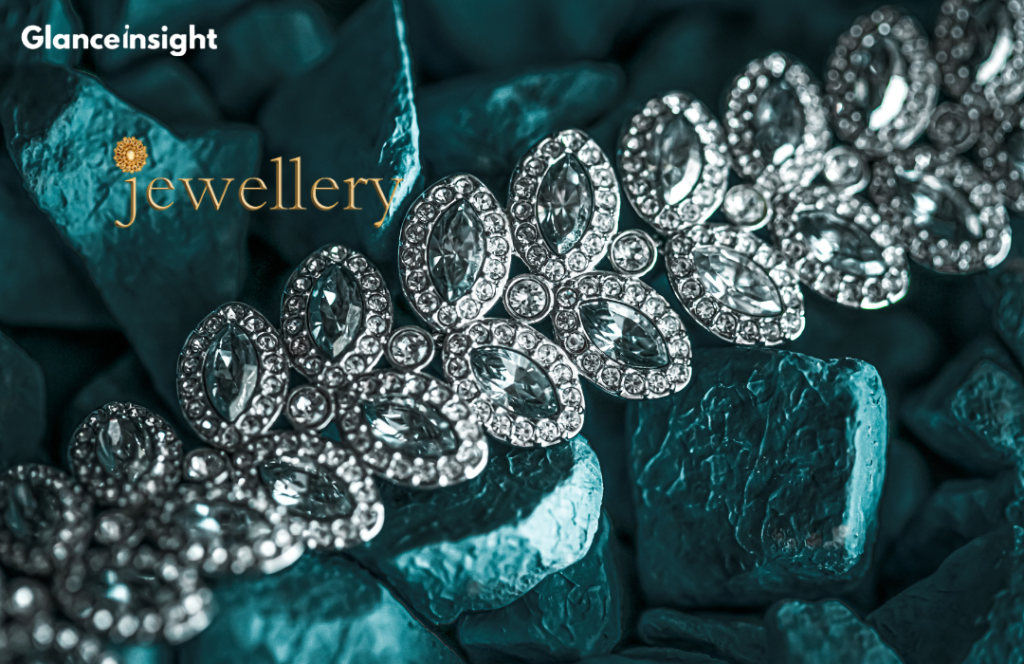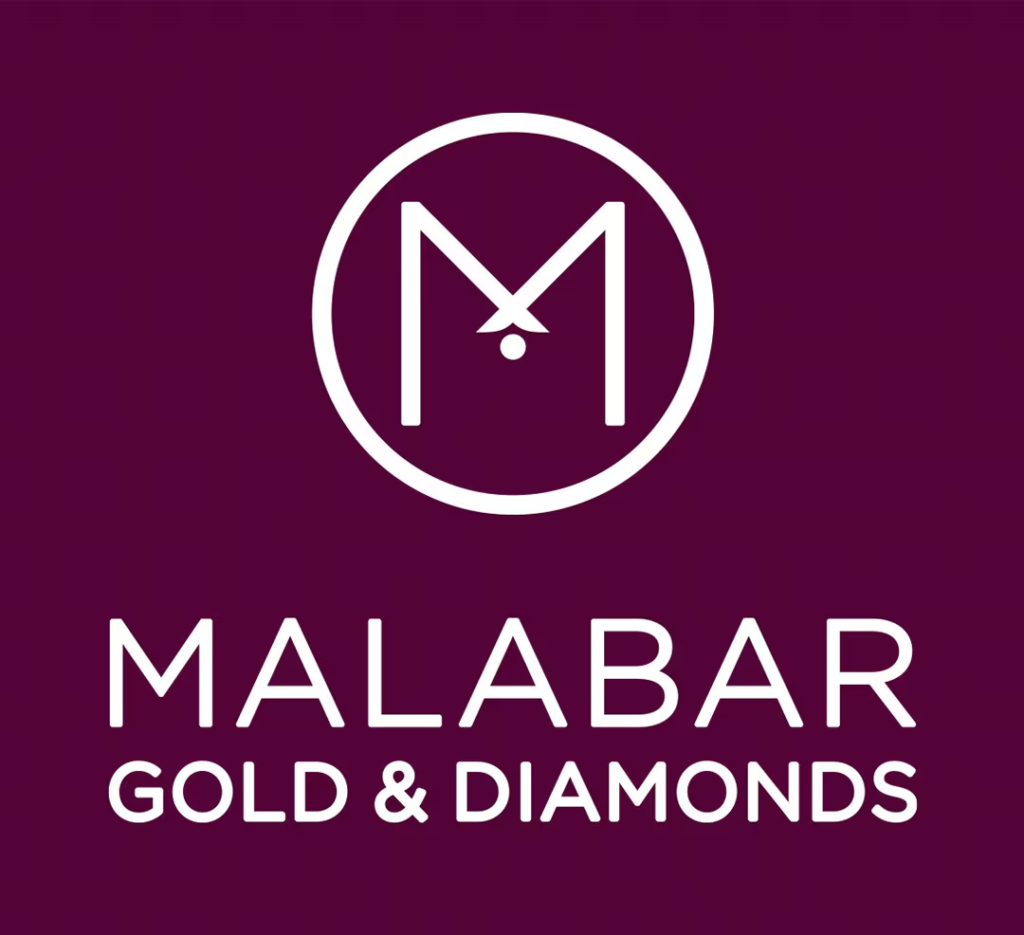Summary
The jewelry industry is a beautiful combination of artistry and business acumen that has always found its way to the hearts of people all across the world. Craftsmanship, innovation and a profound knowledge of what customers want make up this quick-moving industry.

Get an insight on the top 10 jewelry brands in 2025.
| Rank | Company Name | Key Industries |
|---|---|---|
| 1 | Christian Dior SE | Consumer Goods |
| 2 | Swarovski | Community & Lifestyle, Consumer Goods |
| 3 | T.K. Maxx | Commerce & Shopping |
| 4 | Tiffany & Co. | Luxury Goods |
| 5 | Claire’s | Commerce & Shopping |
| 6 | H. Samuel | Consumer Goods |
| 7 | Kering | Luxury Goods |
| 8 | Chow Sang Sang | Consumer Goods |
| 9 | Tanishq | Consumer Goods |
| 10 | Malabar Gold & Diamonds | Consumer Goods |
1. Christian Dior SE

In Wedding Affairs, Christian Dior SE is a name associated with luxury—a backdrop master of the art of blending timeless elegance and distinctly modern trends in jewelry. It is a global leader in the luxury jewelry sector due to the company’s innovation and quality commitment.
Christian Ernest Dior (1905–1957) was a legendary French fashion designer who redefined fashion after the war with his new classic look. Dior was born in the coastal Haute-Normandie town of Granville and, already interested in art at a young age sold sketches and operated an art gallery until finding his true passion in fashion. His skills were honed, early on, through his collaboration with designers such as Robert Piguet and Lucien Lelong, despite the conditions of World War II, during which he was designing on behalf of prominent clients whilst his sister Catherine was engaged in the French Resistance.
Dior created the fashion house in 1946 with the support of an industrialist, Marcel Boussac. The initial 1947 collection with rounded shoulders, waistline belts, and full skirts redesigned the conception of femininity and affluence and immediately gained global recognition. Not only did Dior create elegant designs, but he was also a very artistic person because he had the belief that fashion was brought about by French culture.
In the next decade, Dior presented the seasonal lines illustrating innovation while at the same time preserving the luxury, such as the Bar Suit. He also cultivated talent, choosing Yves Saint Laurent to be his follow-up. Even the last collections of Dior pointed to less strict, more flowing outlines, prefiguring the changing social and fashion trends.
He died in 1957 at the age of 52 after leaving a legacy behind. Dior was not only popularized because he changed the fashion of women, but also his involvement in costume design formed an Oscar, BAFTA, and Cesar nomination. To this day his name is associated with grace, craft and classic beauty.
Key Industry: Consumer Goods
2. Swarovski

The Swarovski : Pioneers in precision cut crystals—transformed the jewelry industry. Featuring a long history of creativity and quality, the brand sells to a broad public and carries a wide range of products, from inexpensive everyday apparel to luxurious statement items. The Swarovski is further regarded when taking sustainability into consideration.
Started by Daniel Swarovski in Wattens, Austria, in 1895, Swarovski is now a global giant in the art of crystal making. Being trained in glass-cutting, Daniel was the first to launch a cutting machine that used electricity to slice through the crystal, making it available to many people and that is what he had in mind: to make a diamond for every person. Swarovski has, over time, diversified to include optical instruments (Swarovski Optik), as well as industrial tools (Tyrolit) and thus built a broad business empire.
Its main subsidiary, the Swarovski Crystal Business, now sells its products in approximately 3000 stockists situated in 170 different countries and employing more than 29,000 individuals, thus bringing in billions of revenue. Ranging from beautiful jewels and figurines, Swarovski items have created acclaim for home decoration and chandeliers with their shimmering and perfection and their special formulas, such as Aurora Borealis, that provide the reflection of a rainbow. It is making the lead-free crystal technology, which ensures that the company is sustainable with its technology, without compromising on the sparkle.
Swarovski has been working with the best designers in the industry through Atelier Swarovski and has created jewelry, architecture and fashion accessories, and its crystals have appeared in such classics as Titanic, Black Swan, and Beauty and the Beast. Its Kristallwelten museum in Wattens is an endeavor of art and entertainment and a crystal experience that has drawn audiences around the globe.
The same company that is still family-influenced but which is now headed by non-family heads is a fusion of the past and the present, as it is still identified with the same images of elegance, art and the transformational power of crystal.
Key Industries: Community & Lifestyle, Consumer Goods
3. T.K. Maxx

T.K. Maxx is a discount retailer that allows wealthy fashion-forward consumers to have access to stylish and affordable jewelry. Its global sourcing strategy means you don’t know what will be in the home goods warehouse unless you go in and take a look.
TK Maxx is a Watford-based, direct retailer based in Watford, England, that specializes in clothing, homewares, and accessories, founded in the year 1994. It was owned by American parent TJ Maxx and used the UK name TK to distinguish it in the UK, where there existed the chain T. J. Hughes. TK Maxx has grown to include Ireland as well as the Netherlands, Germany, Austria, Poland and Australia after it debuted in the UK and has typically been traded in the same unit along with sister brand HomeSense.
The company philosophy is off-price retailing, which means that this brand provides the services of selling designer and high-street garments at prices lower than their regular prices. TK Maxx has progressed from bigger budget stores to bigger Maxx Maxx stores, where it tries to offer value with a departmental experience.
In 2008, it opened its first London central store on Kensington High Street; it started selling online in 2009 (handbags only at first; the range then gradually extended). TK Maxx subsequently expanded to Australia in 2017 where it purchased ex-Trade Secret stores and has since opened more, Tasmania being the next in 2023.
TK Maxx also follows the charitable causes. In the UK it has raised millions of pounds forComic Relief and the Woodland Trust through recycling as well as plastic bag charges and operates the Give Up Clothes For Good move on behalf of Cancer Research UK. In Ireland it sponsors Enable Ireland, which helps children with disabilities.
TK Maxx has an international scope, philanthropic activities and a special off-price dynamic, which makes it one of the best destinations for style-seeking and value-seeking shoppers worldwide.
Key Industries: Commerce & Shopping
4. Tiffany & Co.
Tiffany & Co., an American luxury jewelry brand that was founded in 1837, is known for its sterling silver and diamond jewelry. Tiffany is headquartered on Fifth Avenue in Manhattan. It currently has more than 300 stores globally, including throughout the U.S., Japan, Canada, Europe and around the world, with a goal to expand into Africa. Fine jewelry, watches, fragrances and personal accessories are among its product range.
A legendary American luxury jeweler and specialty design house, Tiffany & Co. (frequently named Tiffany & Co. or Tiffany & Co. around the country), is situated on5th Avenue in New York City. The establishment of the business as a company was in 1837 by Charles Lewis Tiffany and John B. Young, selling stationery and fancy goods, but then he changed its orientation to fine jewelry in 1853, which became the core business of the company. Tiffany gained reputations for sterling silver and diamond jewels, and Tiffany Blue branding, which is now a famous name, was formally trademarked in 1998.
With the artistic leadership of Louis Comfort Tiffany during the early 20th century, Tiffany became world-renowned for innovative designs in Art Nouveau jewelry and stained glass. Notable works are the Tiffany Setting engagement ring (1886), the Tiffany Yellow Diamond, U.S. medals and trophy work, including the NFL Vince Lombardi Trophy, the NBA Larry O Brien Trophy and U.S. Open trophies. Tiffany has entered into fragrance, leather products and home furnishings as well.
Tiffany has more than 300 stores in different parts of the world and has major stores in New York, Paris, Tokyo and Sydney among others and still expanding in new markets. Tiffany was purchased in 2021 by French luxury group LVMH in the amount of $15.8 billion, which became the next stage in the brand global luxury experience.
Tiffany and Co. is devoted to charitable and environmentally friendly activities. Tiffany & Co. Foundation makes donations in order to support such environment-related issues as coral and marine conservation, endangered wildlife, and initiatives. The company has also been using ethically mined gold and diamonds since the year 1992; it has also announced achieving net-zero emissions by the year 2050.
Tiffany is a shop that integrates standards of luxury, creation and company responsibility, being a beacon in the international jewelry trade.
Key Industry: Luxury Goods
5. Claire’s

Claire’s specializes in trendy, affordable fashion jewelry with a younger demographic in mind. The accessibility that its presence has globally makes it a favorite of teens and young adults looking to express their style.
Claire (originally Fashion Tress Industries) was founded in 1961 as a wig retailer, then in 1973 began to sell jewelry and other accessory items when it acquired a 25-store chain called Claire Boutiques. Claire Stations Inc., which is based in Hoffman Estates, Illinois, mainly focuses on tween and teen girls and young women.
It became the owner of more than 3,400 stores in 37 countries and is recognized as provides cheap fashion accessories and ear piercing services and says that it has pierced more than 100 million ears in 25+ years. Throughout decades, Claire has grown through a number of successful acquisitions of accessory chains, including the introduction of the Icing brand targeted at women in their 20s.
The company listed its shares on the stock market when it was publicly traded in the market until it underwent a 2007 leveraged buyout, becoming a privately held company. In 2018, it filed for Chapter 11 bankruptcy because of changes in the market and got out of it in 2022 intending to enter the market again in a publicized way.
Nevertheless, it went bankrupt a second time in 2025 and had to shut a lot of stores in the face of financial difficulties. Claire also is not letting up on malls anywhere in the world with a wide international market and a cluster of products and varieties like jewelry, accessories, toys, and cosmetics catering to young females.
It also changed its strategy to work around the changing retail landscape such that it would incorporate kiosks in drug and grocery stores.
Key Industries: Commerce & Shopping
6. H.Samuel
With high-quality watches and jewelry and very competitive prices, H. Samuel blends tradition with contemporary trends. It fosters customer loyalty by providing personalized services like repair, custom design, etc.
H. Samuel is a leading chain of mass-market jewelry retailers present in the United Kingdom and Ireland and belongs to the Signet Group, the largest retailer of diamond jewelry in the world.
As the company is concerned, its history dates back to the mid-1800s when Moses and Lewis Samuel had a famous business concerning clockmaking and silversmiths in Liverpool. The business passed into the hands of Harriet Samuel, daughter-in-law of Moses Samuel, who turned it into a Manchester Market Street-based mail-order house. In 1890 the first H. Samuel store was established under the retail banner in Preston. By 1914, the chain was up to about 50 stores.
As a way of keeping up with growth, the company relocated its headquarters to Birmingham in 1912. Grandsons of Harriet, Gilbert Edgar and Robert Edgar assumed leadership after World War II whereby the company experienced growth that saw it have more than 200 stores in the country. In 1948, the company got a listing on the London Stock Exchange.
By 1984, the H. Samuel was considerably expanded with a takeover of the James Walker Group, which almost doubled their penetration in the UK. In 1986, Ratner succeeded in purchasing it, although following its public relations disaster of 1992, its parent company distanced itself and rebranded as the Signet Group and renamed its former Ratner outlets as H. Samuel.
In 2005, H. Samuel opened its initial e-commerce webpage, an additional move towards contemporary retailing. In 2015, H. Samuel had more than 300 shops in which approximately 17,200 employees worked in 2008.
And over the years, H. Samuel has gone beyond being a family-run clockmaker and silversmith to becoming one of the most popular jewelry shops in the UK with affordable, trend-setting fashions in watches, jewellery and gifts. The brand focuses on the idea of being a style friend of the customers and it remains operating as a strong presence on the high street and online.
Key Industry: Consumer Goods
7. Kering
Kering being a jewelry brand leader, they oversee prestigious Boucheron. It’s a company well known for its commitment towards sustainability, ethical sourcing and exquisite craftsmanship.
Kering S.A. is a French multinational holding corporation of luxury goods that is based in Paris. It has premium brands that include Gucci, Yves Saint Laurent, Balenciaga, Bottega Veneta, Creed, Maui Jim, Alexander McQueen, and Brioni and also has a 30 percent stake in Valentino. This group also operates Kering Eyewear, which manufactures luxury eyewear, and Kering Beauté, which deals with cosmetics.
Established in 1962 as a timber-trading firm (Pinault S.A.) started by François Pinault, the organization has come a long way in the last several decades. It has changed from timber to retail as it bought interests in other retail groups in the late 1980s and 1990s and it was renamed Pinault-Printemps-Redoute (PPR). The significant luxury turn commenced in 1999 when the organization gained a dominant share in Gucci and Yves Saint Laurent, thus opening its doors into the luxury industry.
Acquisitions that followed established a robust luxury fashion and jewelry brand portfolio and disposals of the brands in the retail business like Printemps and Fnac followed its new strategy.
The group changed the name to Kering in 2013 with a pure luxury concentration. Kering has zoned into luxury eyewear with acquisitions such as Lindberg and Maui Jim and established in-house units, both targeting the development of beauty items. In the year 2024, the revenue of the group was 17.2billion euros, with 47,000 employees and 1,813 operating stores worldwide.
Chairman and CEO François-Henri Pinault remains in charge of Kering until September 2025 at which point CEO Luca de Meo will take the CEO position. Its sustainability initiatives focus on withdrawing fur, fighting violence against women, and putting investments in environmental and social activities.
The luxury houses owned by Kering are famous worldwide, and their competent management ensures their individuality and ability to enjoy group support, distribution, and sustainability initiatives. Nevertheless, Kering is one of the most successful luxury conglomerates in the world, ranked in third place after LVMH and Richemont, despite certain challenges such as a decrease of revenue in early 2025.
Key Industries: Luxury Goods
8. Chow Sang Sang
It is a worldwide household name for its fine gold jewelry and innovative design in Asia. The company delivers a blend of the traditional and the modernized to the wider audience in the region.
Chow Sang Sang Group or Chow Sang Sang jewelry Company Limited, is a well-known jewelry corporation with headquarters established in the Chow Sang Sang Building in Kowloon, Hong Kong. The company is a Bermudian incorporated limited liability company with its shares being traded in the stock market of Hong Kong on SEHK: 116.
The group also has a wholesaler of precious metals, and it runs more than 50 Chow Sang Sang stores in Hong Kong, Macau, and Taiwan and 155 stores in 60 cities in mainland China. It has its subsidiary in Mainland China, known as Chow Sang Sang (China) Company Limited, located in Guangzhou in the Tianhe District.
Mr. Chow Fang Pu established Chow Sang Sang in Guangzhou in 1934. The company moved to Macau during the Second Sino-Japanese War of 1938. During the 1930s and 1940s, the company had branches in Guangzhou, Hong Kong, Macau and Zhanjiang, and these were operated by the brothers of Chow Fang Pu. All heirs have a right to use the trademark of Chow Sang Sang, which gives two firms based on the same trademark in Hong Kong but having a different pedigree.
Chow Sang Sang has enjoyed a rich history of embracing the market trends, hence coming up with luxury products like diamonds, jade, pearls, and watches. It has been on the forefront of digitization by developing an electronic store early and implementing omni-channel retail ways to achieve greater customer experience. The company also developed in an innovative way the collaboration with the famous brands on the themed collections of the jewelry.
An example of the competitive and controlled market Chow Sang Sang operates in is the investigations of gold retailers by the authorities of Shanghai in 2013 regarding the considerations of manipulation of prices.
Key Industries: Consumer Goods
9. Tanishq
Tanishq is a brand from India popular for gold jewelry and established in 1994 in Hosur, Tamil Nadu. The name “Tanishq” is derived by merging two words: Tan means body and Nishk means a type of gold ornament.
Gold is one of the major jewelry items in India, and Tanishq has carved a niche for itself as one of the leading gold jewelry brands in the country.
Starting out with 18k gold watches in 1994, the brand quickly expanded its offering to include 22k gold and diamond jewelry. The highly competitive market place required Tanishq to commit itself to excellence and pursue its customer-centric stance.
Tanishq coming under the Tata Group makes it the most famous jewelry brands in india brand and the brand ensures the authenticity and goodness of what it produces. This reputation has put them in place as one of India’s leading gold jewelry brands; they have a consistent customer base and their reputation has ensured they continue to grow.
10. Malabar Gold & Diamonds

Malabar Gold & Diamonds grew to become a global jewelry powerhouse from its 1993 inception at Kozhikode, Kerala, through the expertise of Mr. M. P. Ahammed. The brand has grown to become among the world’s top five jewelry brands because it maintains high quality standards while expanding its business to more than ten countries.
Malabar gold & diamond vs Tanishq- what makes them different?
Malabar Gold and Diamonds and Tanishq are among the leading brands of jewelry in India; however, they do not target the same audiences. Malabar has already found a niche market with its heavy presence in South India and the Middle East and has good prices with lesser making charges, thus positioning itself as a preference of value seekers.
Tanishq, on the other hand, is a global pan-India brand that has pan-India appeal with a global presence; it is menaced with innovative design, premium craftsmanship, and uniform quality. Where Malabar concentrates on such factors as lower prices and local affinity, Tanishq pays attention to diversity, design superiority, and trust in several markets.
Your priorities determine which one to settle with since Tanishq has thrilling modern designs and detailed designs, whereas Malabar has affordable products and a large coverage in many regions.
Q. Who are the No.1 jewellers in India?
Titan Company Ltd. is one of the top jewellery brands in India.
What is the most popular jewelry brand right now?
Tiffany & Co.: Classic, timeless, and instantly recognizable. That little blue box? Iconic!
Cartier: Bold, luxurious, and oh-so-French. Those Love bracelets? Total statement pieces.
Pandora: Super popular for their customizable charm bracelets. It’s fun to build your own story with them.
But honestly, the “most popular” brand is the one that speaks to you. What kind of jewelry gets your heart racing? Do you prefer delicate pieces or something more bold?
Which jewellery brand is best in the world?
The “best” jewelry brand in the world is subjective and depends on individual preferences, including design aesthetics, craftsmanship, heritage, and personal values. Globally renowned brands like Cartier, Tiffany & Co., and Bvlgari are celebrated for their exceptional quality and timeless designs. In India, Tanishq is highly esteemed for its trustworthiness and innovative designs, making it a popular choice among Indian consumers. Ultimately, the best brand aligns with your personal style, ethical considerations, and the significance you attribute to each piece.
Stay tuned here and connect with the best in the business.And explore more ways to transform your business at the top level.



